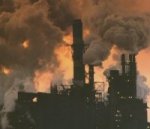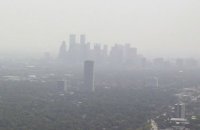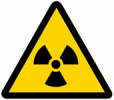What is air pollution?Air is 99.9% nitrogen, oxygen, water vapour and inert gases. Human activities can release substances into the air, some of these can cause problems for humans, plants, and animals.
|
Effects of air pollution
|
Solutions for air pollutionThe first step to solving air pollution is assessment. Researchers have investigated outdoor air pollution and have developed standards for measuring the type and amount of some serious air pollutants.
|
Indoor air pollutionMany people spend large portion of time indoors; as much as 80-90% of their lives. We work, study, eat, drink and sleep in enclosed environments where air circulation may be restricted. For these reasons, some experts feel that more people suffer from the effects of indoor air pollution than outdoor pollution.
|
Outdoor air pollutionSmog is a type of large-scale outdoor air pollution. It is caused by chemical reactions between pollutants derived from different sources, primarily automobile exhaust and industrial emissions. Cities are often centres of these types of activities, and many suffer from the effects of smog, especially during the warm months of the year. A consequence of outdoor air pollution is acid rain. When a pollutant, such as sulphuric acid, combines with droplets of water in the air, the water can become acidified. The effects of acid rain on the environment can be very serious. It damages plants by destroying their leaves, it poisons the soil, and it changes the chemistry of lakes and streams. Damage due to acid rain kills trees and harms animals, fish, and other wildlife.
|
Major air pollutants |

 Pollution also needs to be considered inside our homes, offices, and schools. Some of these pollutants can be created by indoor activities such as smoking and cooking. It is therefore important to consider both indoor and outdoor air pollution.
Pollution also needs to be considered inside our homes, offices, and schools. Some of these pollutants can be created by indoor activities such as smoking and cooking. It is therefore important to consider both indoor and outdoor air pollution.  Air pollution
Air pollution Adequate ventilation is a key to controlling exposure to indoor air pollution. Home and work environments should be monitored for adequate air flow and proper exhaust systems should be installed.
Adequate ventilation is a key to controlling exposure to indoor air pollution. Home and work environments should be monitored for adequate air flow and proper exhaust systems should be installed.  There are many sources of indoor air pollution. Tobacco smoke, cooking and heating appliances, and vapours from building materials, paints, furniture, etc. cause pollution inside buildings.
There are many sources of indoor air pollution. Tobacco smoke, cooking and heating appliances, and vapours from building materials, paints, furniture, etc. cause pollution inside buildings.  For each city, the exact causes of pollution may be different. Depending on the geographical location, temperature, wind and weather factors, pollution is dispersed differently.
For each city, the exact causes of pollution may be different. Depending on the geographical location, temperature, wind and weather factors, pollution is dispersed differently.  Ozone depletion
Ozone depletion